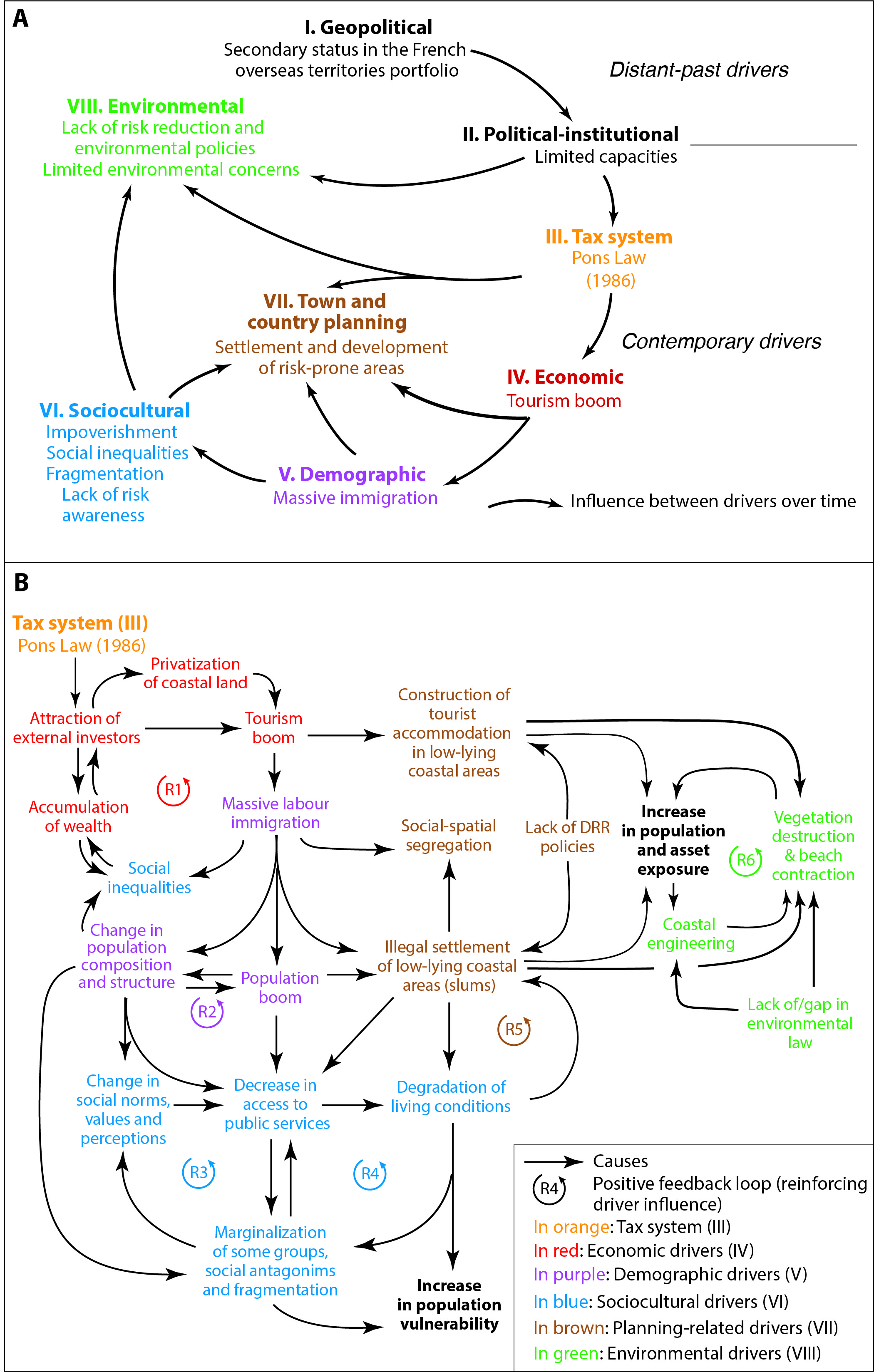TIREX
ANR OURAGANS TIREX
Sharing learning from post-disaster research for strengthening individual and collective response and adaptation capacities in the context of climate change (Leeward Islands - 2017 hurricane season)
(2018-2021)
- Coordinator: Frédéric Léone, Professor in Geography, GRED (University of Montpellier 3-IRD)
- LIENSs’ researchers involved:
Virginie DUVAT, Professor in Geography
Valentin PILLET, PhD in Geography
Natacha VOLTO, Study engineer, image analysis
- External partnership:
Scientific partners: BUMR GRED University Paul Valéry Montpellier 3-IRD, UMR LGP 8591 University Paris 1-CNRS, UMR 8053 LC2S University of West Indies-CNRS, EA 4539 LARGE University of the French Antilles, Météo-France Direction Interrégionale Antilles-Guyane, CCR
Other partners: representatives of the concerned French State services, and of the local administrations of Saint-Martin and Saint-Barthélemy islands, IUNC-France (Overseas and Ecosystems programs) - Funding:
ANR, AAP OURAGANS 2017
- Keywords : Tropical cyclones, Antilles, coastal systems, risk management, nature-based solutions, adaptation to climate change
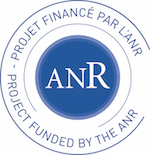
Presentation and objectives of the project
The TIREX project includes 5 work packages built on an interdisciplinary approach involving geography, geomorphology, spatial analysis and remote sensing techniques, political sciences, information and communication, sociology, scientific mediation, climate modelling and climatology. Work Package 1, dedicated to the reconstruction of Trajectories of Vulnerability, addresses the drivers and mechanisms generating coastal risk and disaster. The main Impacts of tropical cyclones and related physical processes are addressed in Work Package 2, based on numerical modelling, field observations, mapping and statistical analysis. Beach monitoring allows assessing the readjustment of coastal eco-morphological systems in different contexts (from natural to highly-modified by human activities). Work Package 3 consists in analysing Crisis management and territorial reconstruction , based on investigations conducted with local populations and institutions, so as to highlight both the levers and barriers for improved management and reconstruction. It more specifically focuses on individual and collective responses to the cyclone-induced crisis, so as to assess the resilience of the social and institutional components of affected territories in the short and long terms. Work Package 4 is more operational, consisting in supporting local to national stakeholders in promoting Improved risk management and reconstruction. It thus allows the dissemination of results in study islands.
LIENSs is more specifically involved in Work Packages 1, 2 and 4. LIENSs’ researchers work on Saint-Martin, Saint-Barthélemy, the British Virgin Islands (Tortola, Anegada) and Anguilla.
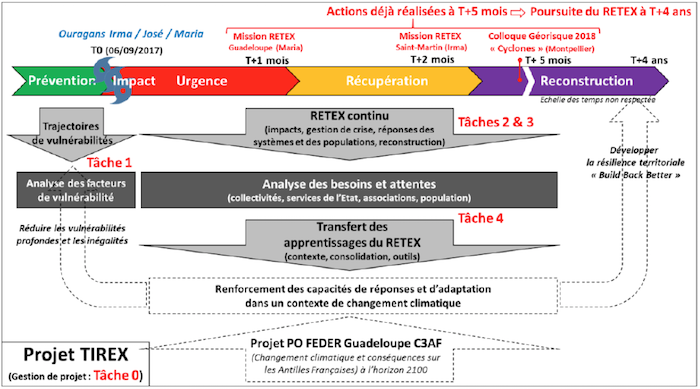
Results
TWP 1 - Reconstruction of the Trajectories of Vulnerability over the 1950-2017 period (coord. GRED)
Using an interdisciplinary approach involving social (historians, lawyers, human geographers) and physical (geo- morphologists) scientists, supported by research engineers with expertise in statistics, Geographic Information Systems (GIS) and remote sensing techniques, and three points of entry, including (1) natural hazards, risks, disasters; (2) economic development, tax system; and (3) town and country planning, risk management, environmental management, we reconstructed the Trajectory of Exposure and Vulnerability (TEV) of Saint-Martin. The study highlighted the contribution of deeply enrooted factors and processes to the exposure and vulnerability of the population, buildings and infrastructure to tropical cyclones’ impacts. Eight categories of interrelated drivers control the TEV of the French part of the island, including geopolitical, political-institutional, tax-related, economic, demographic, sociocultural, town and country planning-related, and environmental.
These drivers acted as amplifiers of tropical cyclones’ impacts in 2017, as shown in the figure below.
WP 2 - Impacts on and resilience of coastal environments (coord. LIENSs & LARGE)
- Assessment of tropical cyclones’ impacts on eco-morphological coastal systems and of these systems’ readjustement at different timescales
- Design of a typology of coastal systems, based on the consideration of the drivers of these systems’ responses
Some results have already been published (see publications below). In addition, one paper is in preparation, which addresses the impacts of and readjustment of beaches to the 2017 tropical cyclones on Saint-Martin, Saint-Barthélemy, Anguilla, Tortola and Anegada.
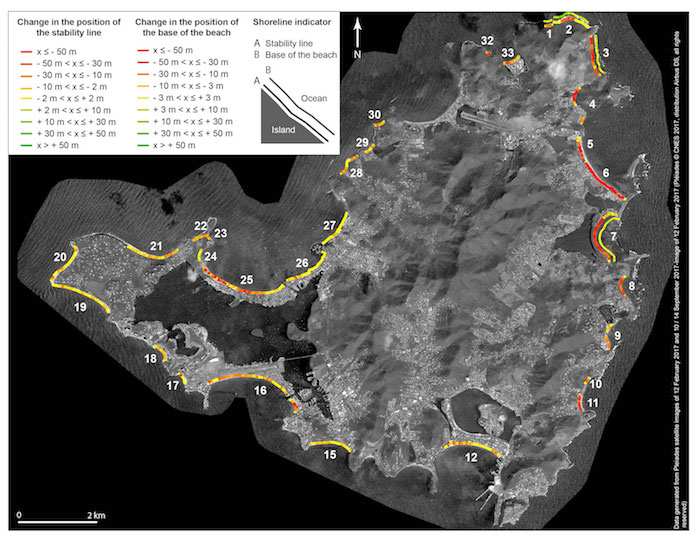
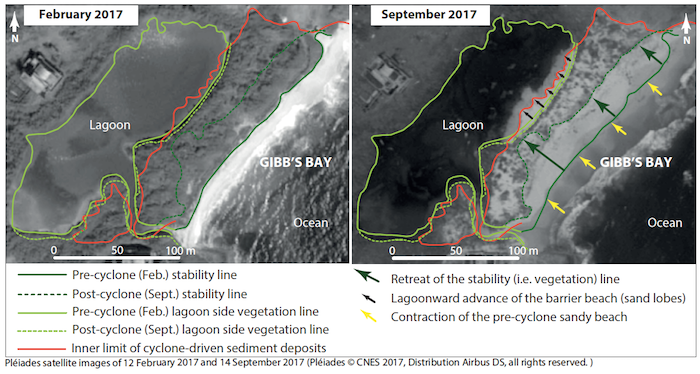
WP 4 - Lessons learnt and transfer to concerned stakeholders (coord. LC2S & GRED)
- ➢ Elaboration of a guide aimed at supporting territorial reconstruction in the context of climate change (coord. LGP & LIENSs)
Publications
Articles in scientific journals:
– Duvat V.K.E., Volto N., Stahl L., Moatty A., Defossez S., Desarthe J., Grancher D., Pillet V., 2021. Understanding interlinkages between long-term trajectory of exposure and vulnerability, path dependency and cascading impacts of disasters in Sant-Martin (Caribbean). Global Environmental Change, 67, 102236. [https://doi.org/10.1016/j.gloenvcha.2021.102236]
– Moatty A., Grancher D., Duvat V.K.E., 2021. Leverages and obstacles facing post-cyclone recovery in Saint-Martin, Caribbean: between the ‘window of opportunity’ and the ‘systemic risk’. International Journal of Disaster Risk Reduction 63, 102453. [https://doi.org/10.1016/j.ijdrr.2021.102453]
- Duvat V., Pillet V., Volto N., Krien Y., Cécé R., Bernard D., 2019. High human influence on beach response to tropical cyclones in small islands: Saint-Martin Island, Lesser Antilles. Geomorphology 325: 70-91.
- Pillet V., Duvat V., Krien Y., Cécé R., submitted. Contribution of human disturbances to the variability of the impacts of tropical cyclones Irma, José and Maria (September 2017) on St. Bartholomew beaches. Ocean & Coastal Management, 174, 71-91.
Communications dans des colloques :
- Pillet V., Duvat V.K.E., Post-cyclone readjustment of beaches on Saint-Barthélemy Island (Lesser Antilles). Littoral 2018, Octobre 2018, Leeuwareden, Netherlands.
- Pillet V., Duvat V.K.E., Impacts des cyclones Irma, José et Maria (Septembre 2017) sur les systèmes sédimentaires côtiers de l’île de Saint-Barthélemy. Géorisques, Janvier 2018, Montpellier, France





